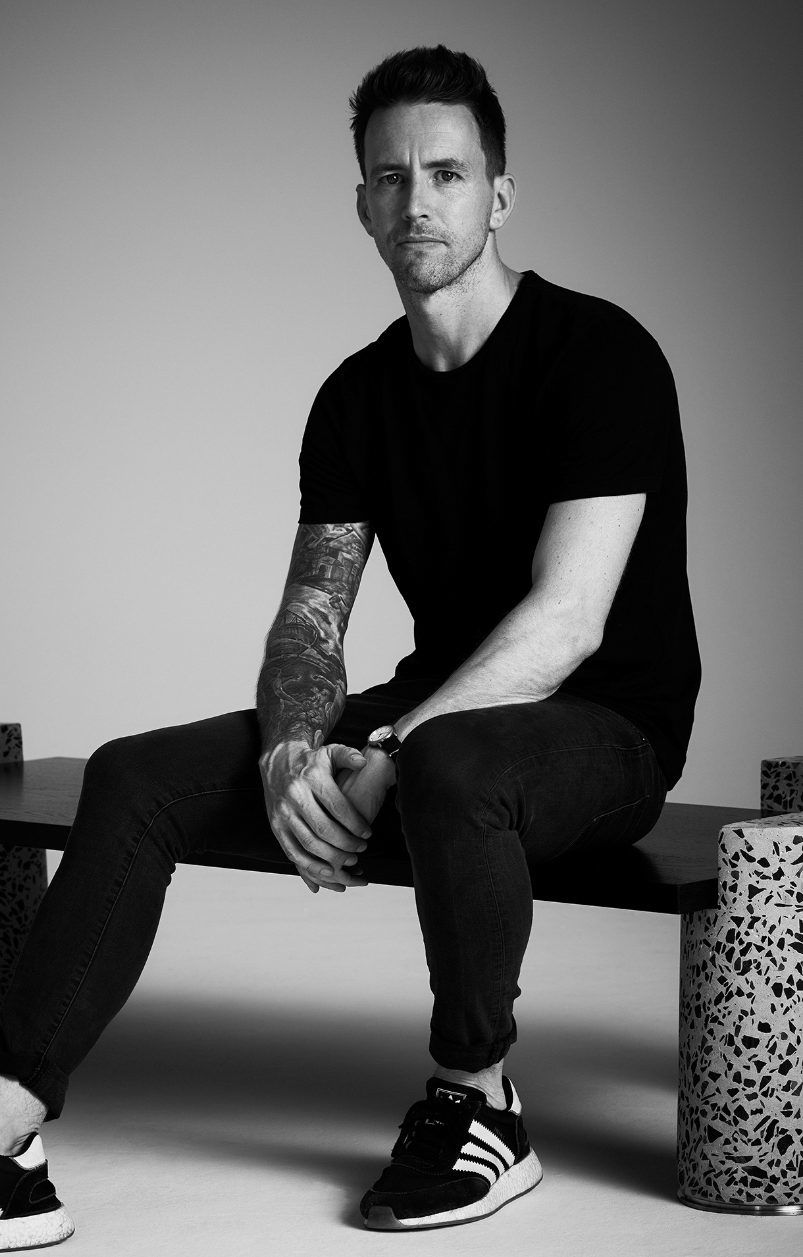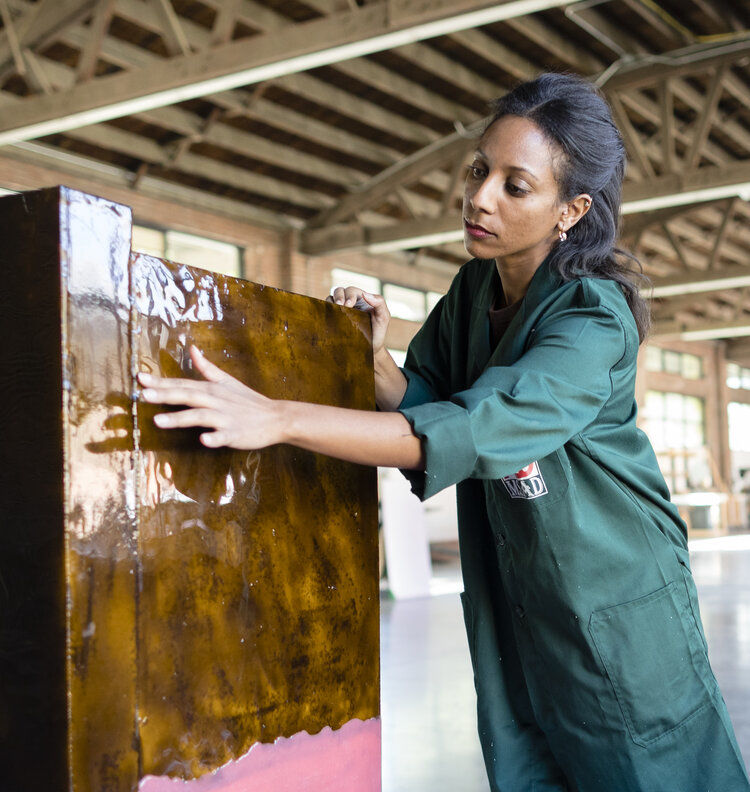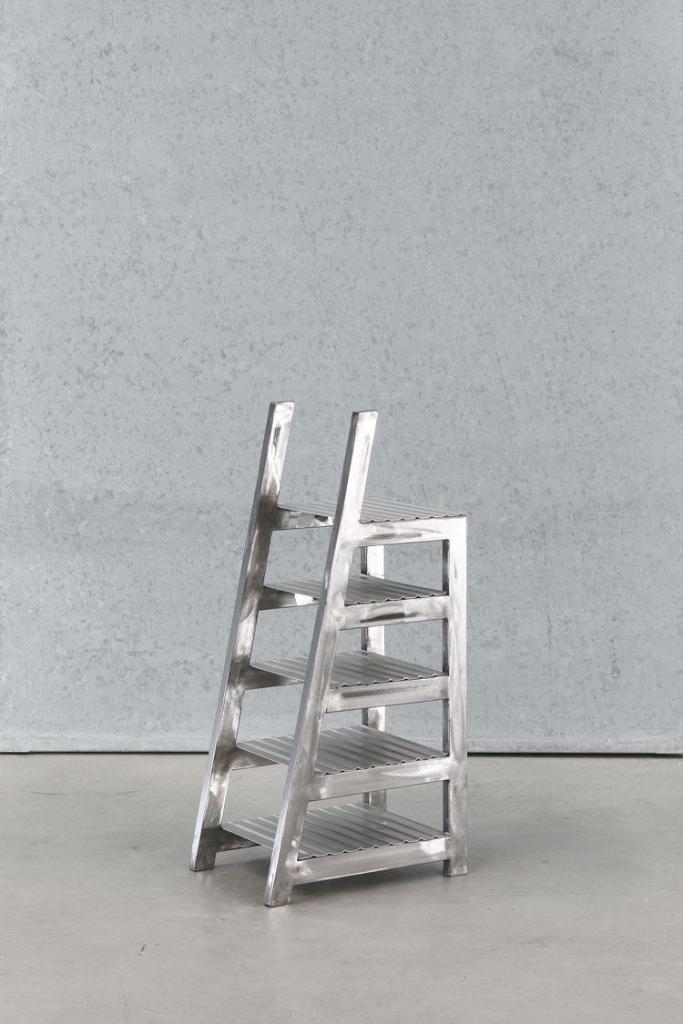Oliver Whyte ; The Studio Whose Functional Objects Celebrates The Inherent Beauty of Concrete
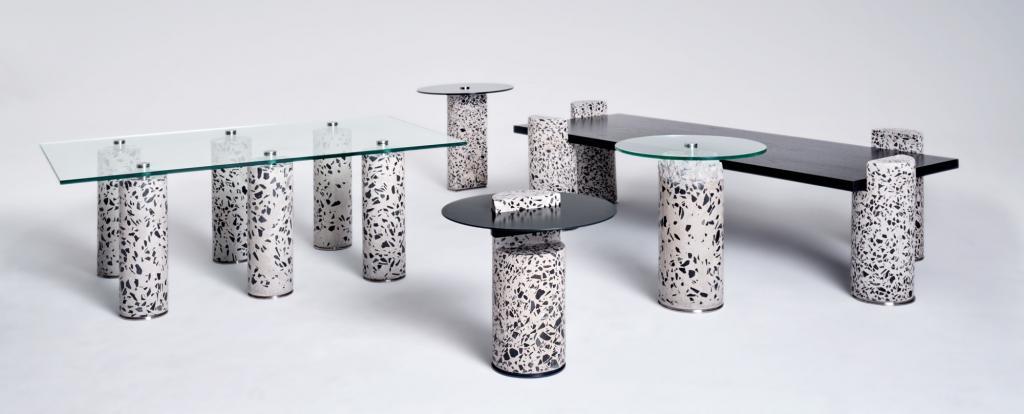
Oliver Whyte is a multidisciplinary studio founded by South African designer Ross Robertson in 2019. The studio’s debut collection, Core, encapsulates its innovative focus on material exploration and has garnered international press coverage. The series of functional objects celebrates the inherent beauty of concrete, challenging our perception of it as a purely utilitarian material.
The Core collection comprises five pieces; three side tables and two coffee tables. Each work features a robust, weighty concrete base that supports a surface of visually lightweight glass, thin powder-coated steel or solid ebonised oak. The tops are held in place using simple steel attachments, or rest delicately on the edges of the base elements. This ensures the viewer’s focus remains on the smooth and distinctively patterned concrete, which resembles on-trend terrazzo.
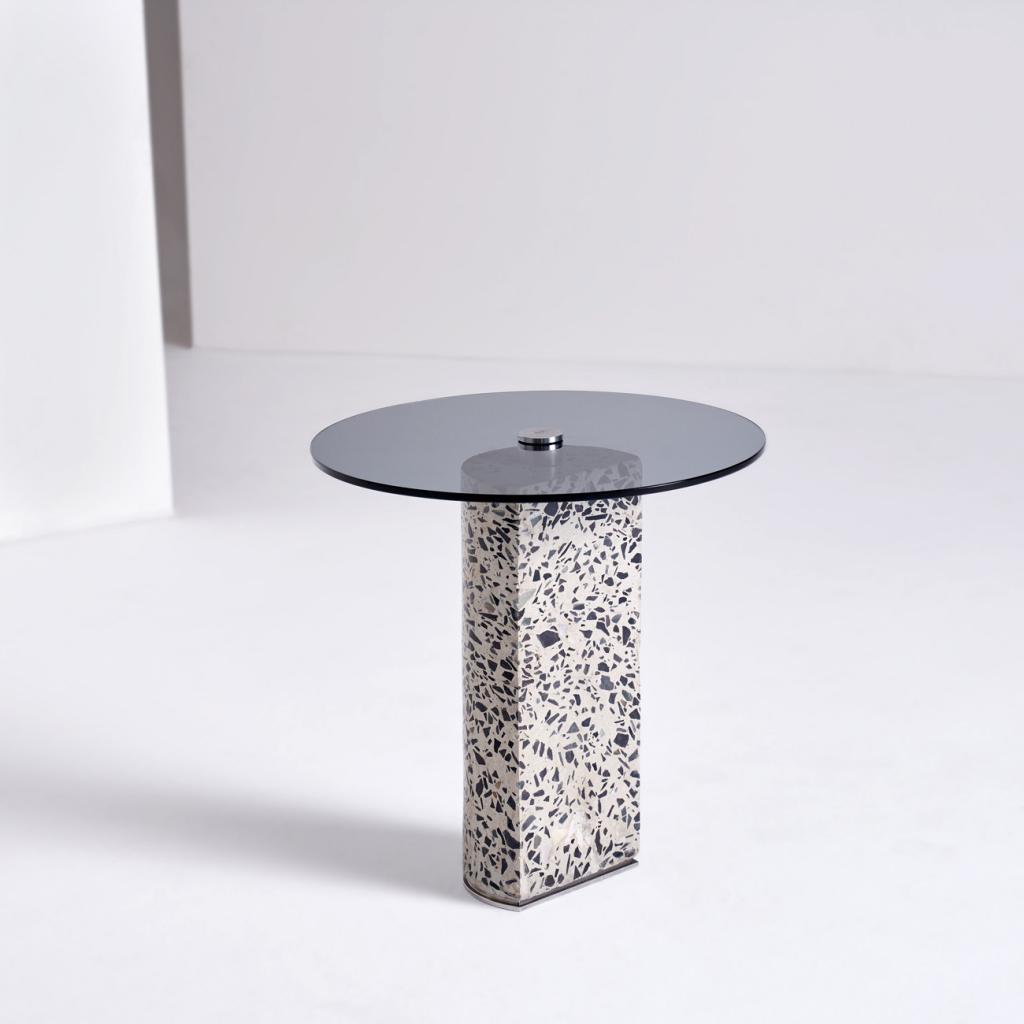
Flat, side table by Oliver Whyte. 45 x 45cm. © Oliver Whyte 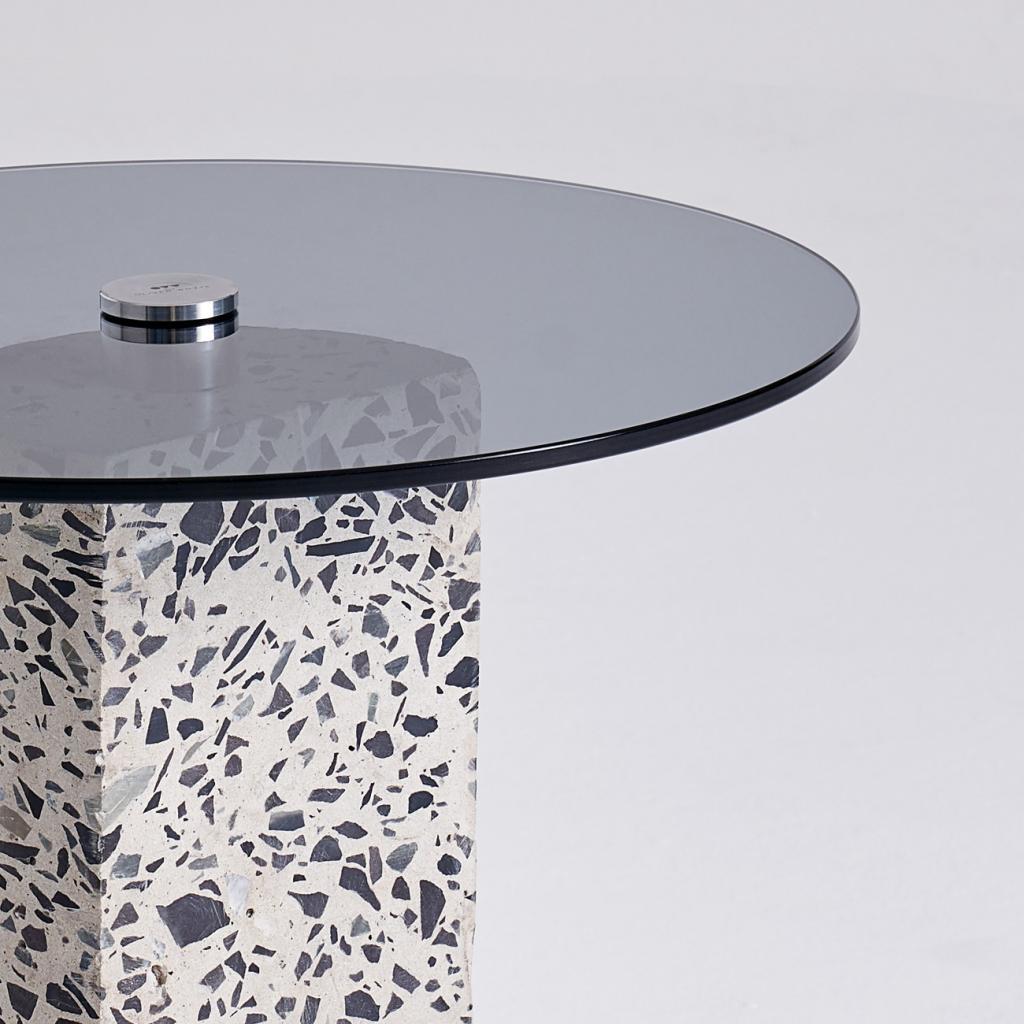
Flat, side table by Oliver Whyte. Details. © Oliver Whyte
Robertson’s inspiration for the Core series came from his architectural background (he spent over a decade working at a small architecture practice in Cape Town) and his observations of the processes used on building sites. The concrete forms are made by appropriating the industrial practice of core drilling, which involves using a cylindrical cutting barrel to remove a section from a solid wall. The byproduct from this action, which is usually disposed of afterwards, is a smooth-sided cylinder that exposes the inner structure of the wall. Robertson took one of these cores home from a site he was working on and, after admiring its raw beauty, decided to replicate its aesthetic qualities in a series of sculptural furniture designs.
“Normally you only see the outer surface of concrete,” says Robertson, “but these cores are like a cross-section that shows you what concrete is made from. You can see the reinforcing metal bar, the stone and the honeycombing produced by the chemical reaction that occurs between the cement and water. It’s amazing the amount of depth and detail hidden inside.”
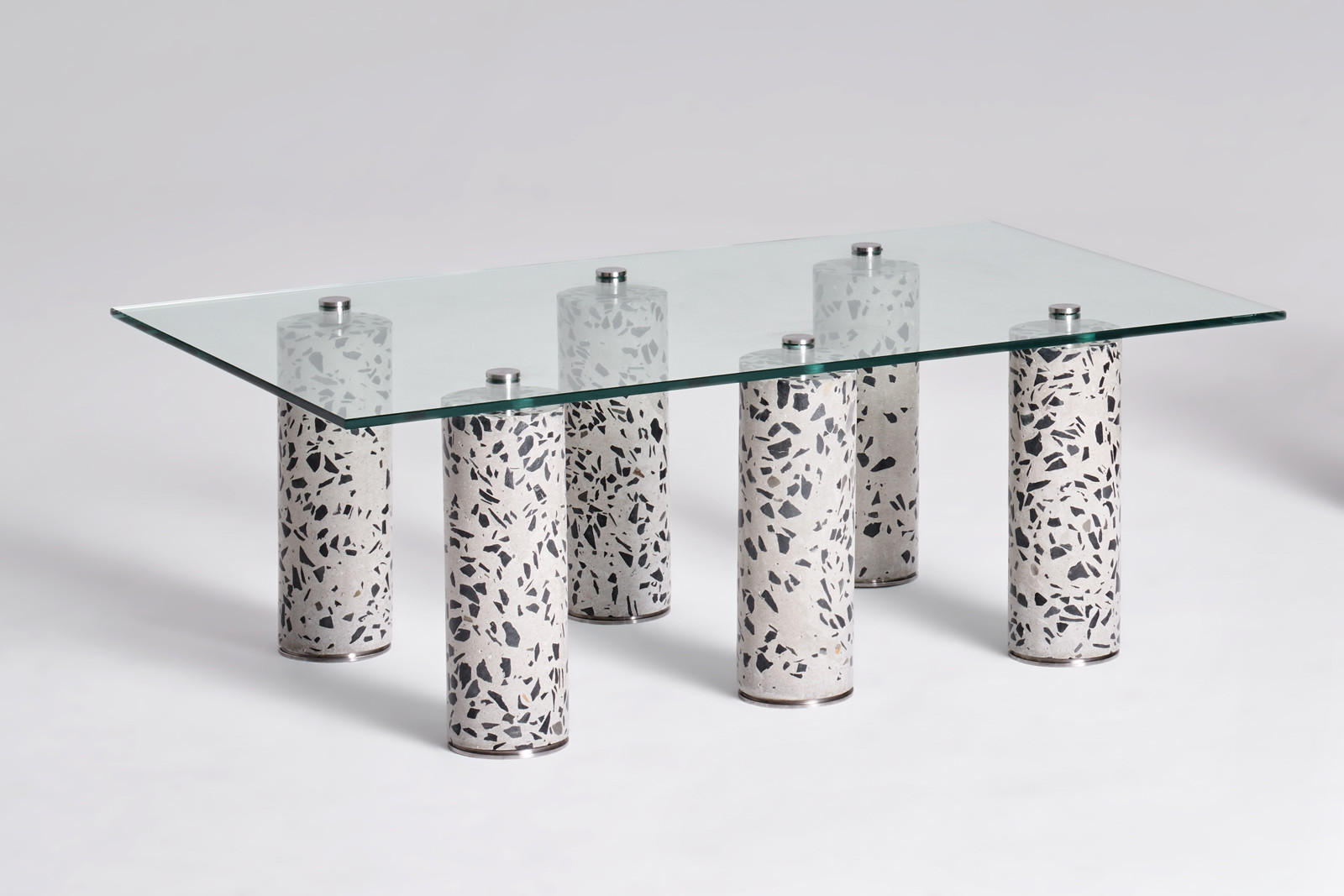
Although the idea for the project came from concrete cores discarded from building sites, this first edition of the Core collection uses a concrete Robertson developed specially to ensure he could control aspects of its character. The basic recipe is the same as concrete typically used in construction, but additives such as marble dust or pigments are used to tweak the colour of the cementitious base. He also experiments with aggregates such as rose quartz to provide different colour options.
Once the concrete mix has hardened, Robertson works with a local core-drilling company to carve out the shapes he needs. The forms are determined by the standardised diameters of the barrels used to drill the material. Part of the collection’s charm results from imperfections in the way the material is mixed and set. It is impossible to determine exactly how the aggregate will be distributed throughout the cement, so the pattern created when the stone chips are sliced through are completely random.
“I loved the idea of creating a shape through the method of reduction, rather than the use of a mould, because it brings out the honest nature of concrete,” Robertson adds. “I want to see imperfections and blemishes, that is where the beauty lies.”
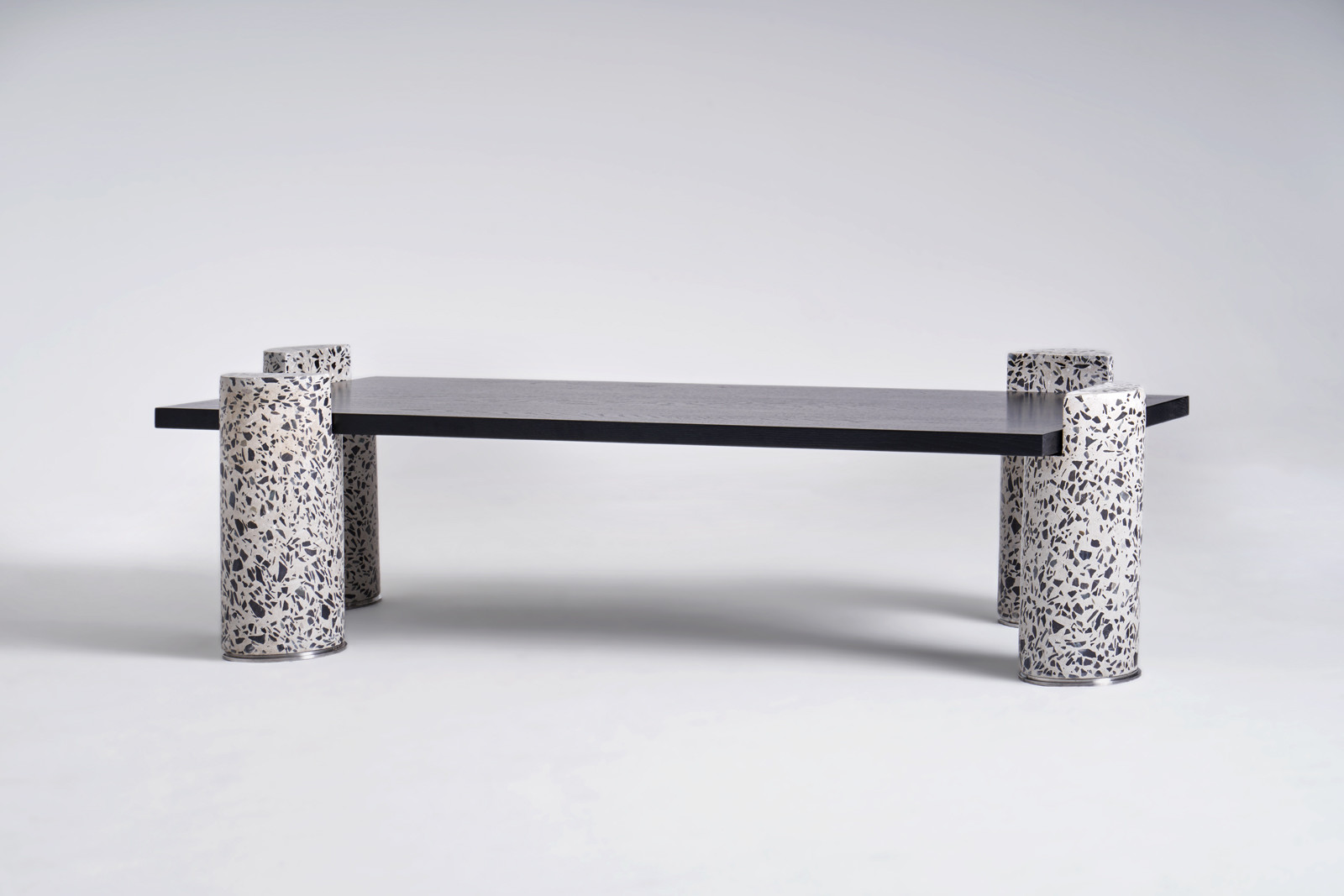
The treatment of the wood, glass and steel table tops is intended to create a strikingly light and refined juxtaposition with the heavy concrete. In the example of the Ledge table, the corners of the oak surface rest lightly on the edges of four independent columns, while the 6 coffee table features a glass top that seems to float above six uniformly spaced cores. The concrete of the Rough side table is chipped away around its upper edges to introduce a textural contrast, while the base of Flat has been sliced along its length to flatten one section of the cylinder. Finally, the Collar side table has a powder-coated steel surface that slides onto a protruding section where the top of the core has been sliced in half.
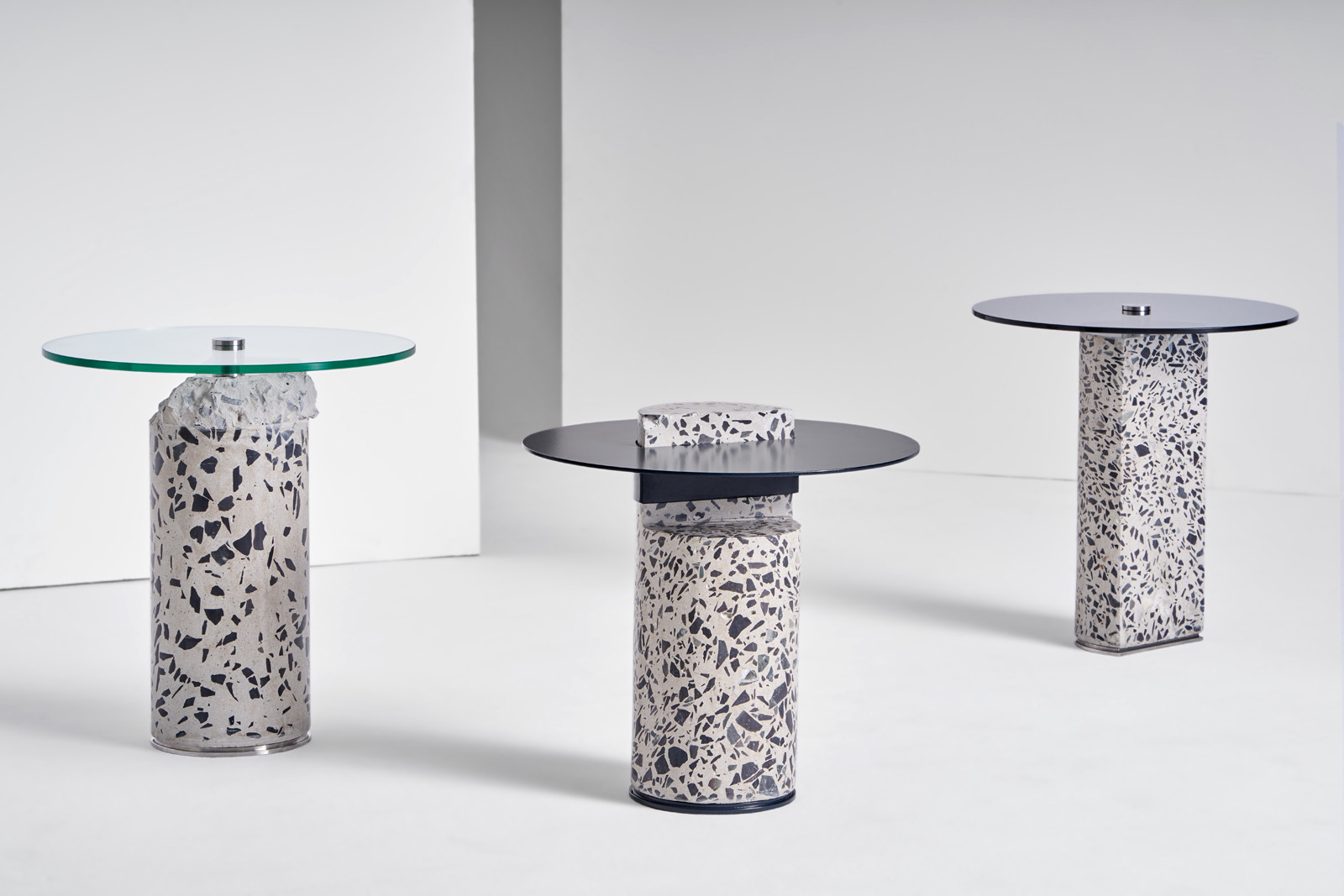
With Core, Oliver Whyte joins a long tradition of artists – Marcel Duchamp and Andy Warhol spring immediately to mind – who have experimented with reframing everyday objects and materials as art. Robertson cites contemporary New York City-based artists Misha Kahn and Katie Stout as sources of inspiration for his playful, materials-led approach. In their unconventional use of conventional materials, Oliver Whyte’s pieces also recall the work of designers such as the Campana brothers, Fredrikson Stallard, Paul Cocksedge or Andrea Branzi.
According to Robertson, the Core collection represents a starting point for ongoing experimentation, with new pieces likely to be added over time. He has also begun to develop new work based on similar principles of transforming humble materials into sophisticated sculptural designs. The success of Coresuggests it will be worth keeping an eye on what comes next from this inventive Cape Town studio.

